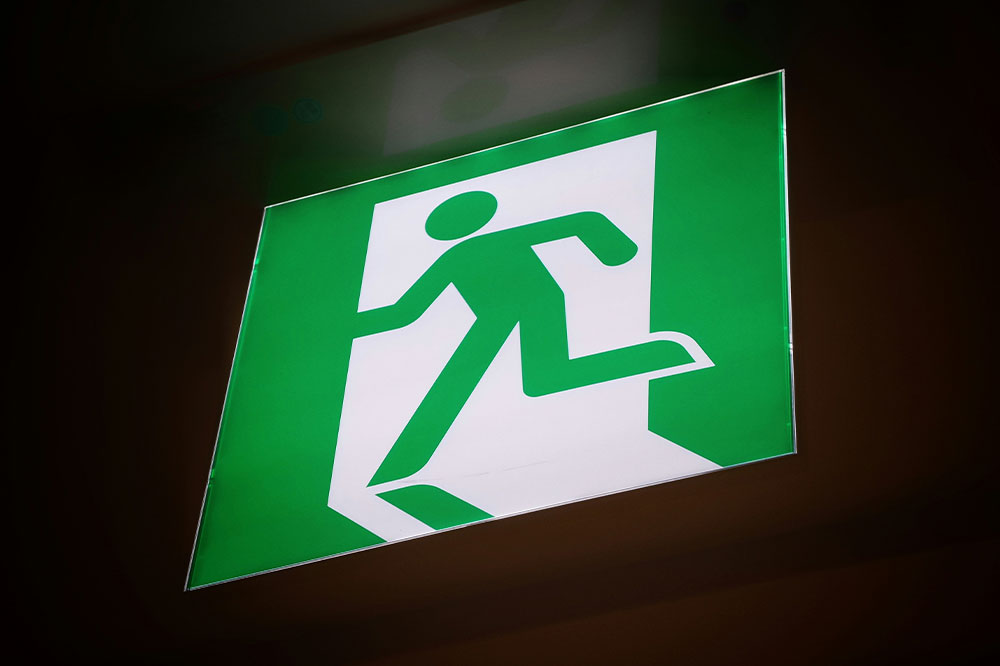In today’s society, which prioritises the welfare of children, fire risk assessment in schools holds a high place on the priority list. Schools, where children spend a large part of their day, must prepare thoroughly for potential issues. A vital aspect of this preparation involves conducting fire risk assessments for schools. Fire risk assessments help schools identify possible dangers in the vicinity and take appropriate actions to protect both staff and students.
Fire safety goes beyond regulations; it involves understanding the entire building. Schools can actively manage potential threats by evaluating building layouts, fire safety designs, and emergency procedures. This approach ensures everyone knows the risks and understands the necessary procedures in an emergency. The result is a safer learning environment, providing peace of mind for parents, staff, and students.
Fire Risk Assessment in Schools: More Than Just a Requirement
Fire safety in schools should focus on creating a safe learning environment, not just meeting regulations. Schools must ensure students and teachers are not exposed to unnecessary risks. Fire safety is essential in a busy school setting. A fire outbreak can cause chaos and panic, especially with many students inside the building. As a result, effective evacuation procedures are crucial to reduce injury risks.
In addition to physical injuries, fires can disrupt education and cause emotional trauma. By applying fire safety principles, schools can minimise these risks. This allows learning to continue safely and ensures the well-being of students, staff, and visitors.
Fire safety education also teaches children the importance of responsible citizenship and personal safety. Schools prioritising fire safety protect their community while shaping future generations who value safety as a personal responsibility.
Legal Requirements for Fire Risk Assessments in UK Schools
UK law mandates that all businesses, including schools, complete documented fire risk assessments. These assessments must identify risks and outline actions to manage them. Schools must conduct comprehensive fire risk assessments to ensure the safety of everyone in their facilities. The Regulatory Reform (Fire Safety) Order 2005 requires schools to assess fire risks, take preventative measures, and regularly review their fire safety plans. Non-compliance risks prosecution, and more critically, it endangers lives.
Understanding the Fire Risk Assessment Process
A fire risk assessment for schools helps evaluate how vulnerable a building is to fire and what steps should be taken to improve safety. This process involves reviewing the school’s layout, the number of people present, and existing fire safety measures. The assessor inspects the building’s physical structure, escape routes, and fire-fighting equipment.
If improvements are necessary, the assessor records the issues, such as blocked exits, faulty electrical equipment, or improperly stored flammable materials. After the assessment, a report is created, which includes a risk rating and an action plan to address any identified issues. The action plan typically outlines the severity of each risk and suggests a timeline for addressing them.
Key Areas Covered in a Fire Risk Assessment
1. Identifying Fire Hazards in Schools
A fire risk assessment identifies potential fire hazards in three main categories:
- Ignition risks: Electrical equipment, computers, chemicals, and sunlight.
- Fuel sources: Paper, furniture, and flammable liquids or gases.
- Oxygen sources: Natural oxygen and materials that oxidize or open windows and doors that increase oxygen flow.
2. People at Risk
After identifying fire hazards, the assessor evaluates the people at risk. This includes considering their locations, the number of occupants, and whether escape routes are adequate. People with disabilities receive special attention to ensure they can evacuate safely. Additional training or equipment may be recommended to reduce risks further.
3. Routes and Exits
The assessor examines the building’s layout to ensure clear and adequate escape routes. They also look for areas where improvements might be needed, such as removing blocked exits or ensuring combustible materials like coats or furniture do not obstruct pathways.
4. Staff Training and Maintenance
Proper staff training and maintenance of fire safety systems are crucial to overall fire safety. Staff must be trained to understand fire risks, know evacuation procedures, and assist students, particularly those with disabilities. Training should include how to use fire extinguishers and identify emergency exits. Schools must also schedule regular maintenance checks for fire alarms, emergency lighting, and fire-fighting equipment. Routine fire drills keep everyone prepared in case of an emergency.
5. Regular Reviews of Fire Risk Assessments
Regularly review fire risk assessments, mainly when significant changes occur, like building modifications or increased risks. Consistent reviews ensure that fire safety remains a top priority and that schools comply with regulations.
Conclusion: A Safer Future for UK Schools
Fire risk assessment for schools is vital. It provides a safer atmosphere in learning establishments in the UK and fulfils a legal requirement.
However, fire safety goes beyond the report. It must involve staff, students, and relevant stakeholders to ensure it remains a priority. Schools that take fire safety seriously ensure education can take place uninterrupted by fire unnecessarily.
Contact us now and organise your assessment so you can start providing a safer learning environment for all.

Liam is our founder and Managing Director, bringing nearly a decade of experience in fire safety regulation and compliance across both the public and private sectors.
He holds a Level 4 Diploma in Fire Safety, earned during his time as an Inspecting Officer with his local Fire & Rescue Service. With a strong background in fire strategy development and fire risk assessment, Liam is dedicated to delivering expert guidance that improves building safety.




